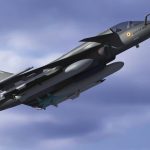The Indian Army has taken a significant step toward modernizing its training ecosystem with the introduction of indigenous Augmented Reality (AR) and Virtual Reality (VR) simulators. These advanced systems have been developed by the Simulator Development Division (SDD) under the Army Training Command (ARTRAC) as part of a five-year modernization roadmap laid out by the Chief of Army Staff.
This initiative is closely aligned with the Atmanirbhar Bharat (Self-Reliant India) mission. The AR/VR systems offer immersive training environments that allow soldiers to practice combat scenarios and tactical decision-making in risk-free, virtual settings.
According to research published in the Journal of Defense Modeling and Simulation, VR-based training can enhance soldier performance by 20 to 30 percent. These gains are especially relevant for forces preparing to operate in complex terrains and high-risk zones.
While many Western militaries rely heavily on foreign-developed systems such as the United States Army’s $21.9 billion deal with Microsoft for the Integrated Visual Augmentation System (IVAS), India is charting an independent path. By partnering with domestic tech startups and integrating artificial intelligence, the Indian Army is crafting solutions tailored to its unique operational demands, particularly in border areas.
This development is part of a larger strategic plan to invest $130 billion in defense modernization by the end of 2025 and boost indigenous defense production to $25 billion. As these AR/VR training systems are adopted more widely, they are expected to reshape soldier preparedness while reinforcing India’s vision of technological self-sufficiency in the defense sector.













